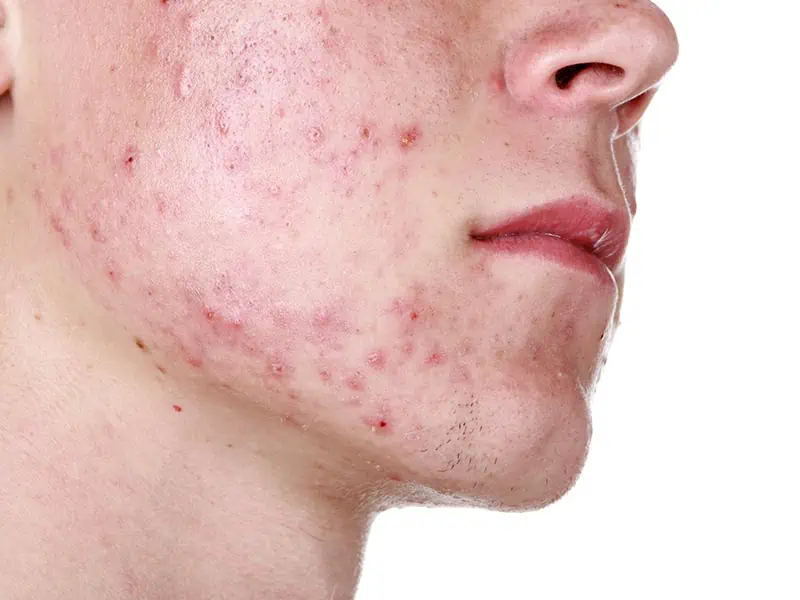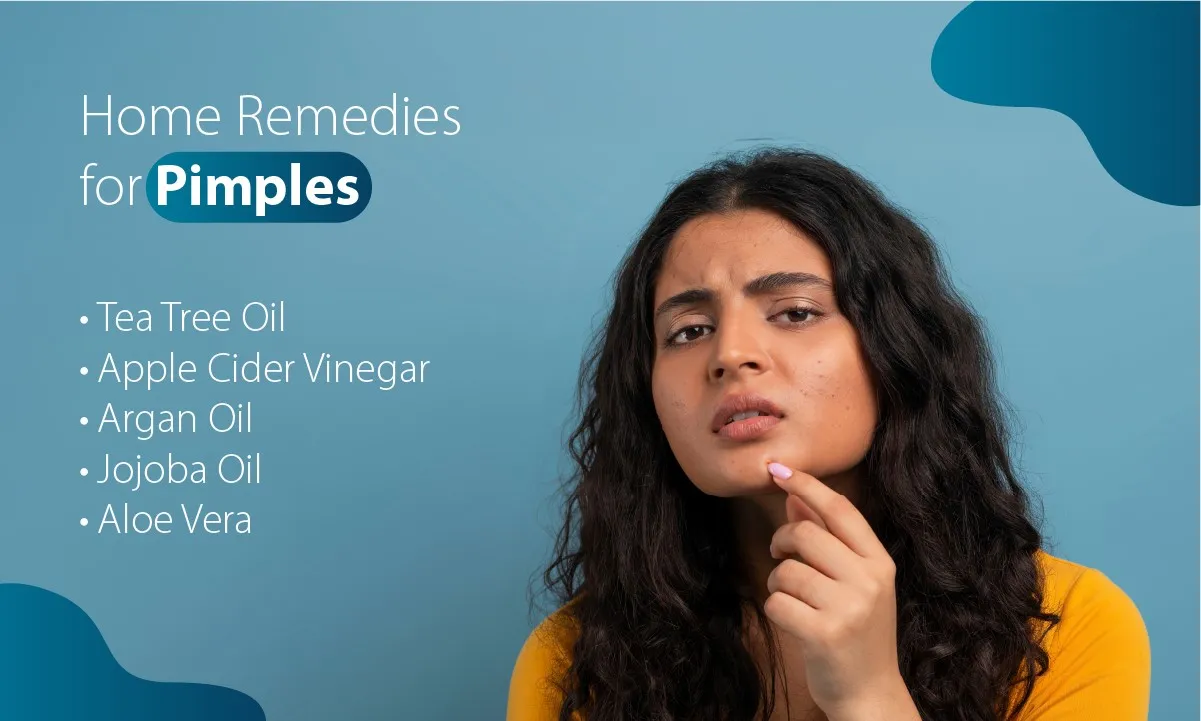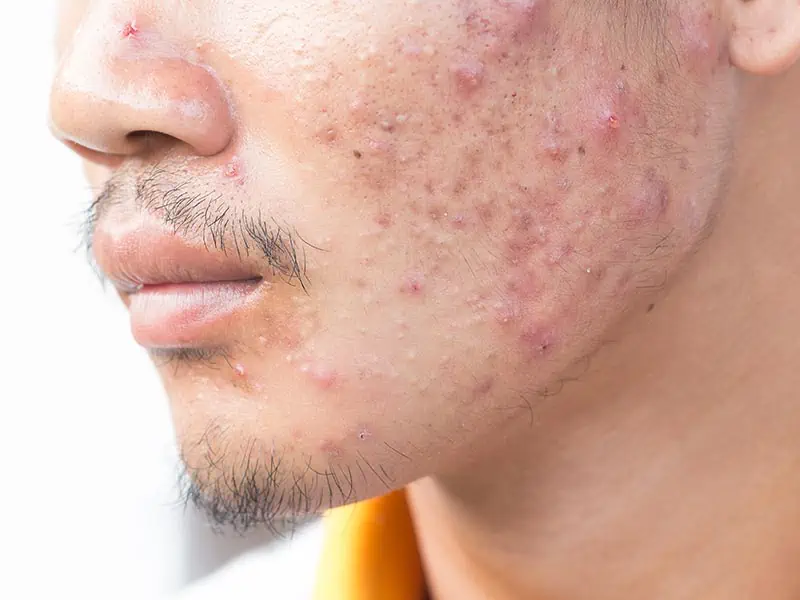Have you ever stood in front of the mirror, scrutinizing every stubborn pimple and wondering if there's a natural solution to your acne woes? Tea tree oil might just be the answer you've been searching for.
This potent essential oil is gaining popularity as a home remedy for acne, offering a natural, effective alternative to harsh chemical treatments. Imagine waking up to clearer skin and newfound confidence, all from a simple addition to your skincare routine.
But before you rush to try it out, there's so much more to discover. From understanding how tea tree oil works to learning the best ways to use it safely, this article will guide you through everything you need to know. Dive in to unlock the secrets of tea tree oil and transform your skincare journey.
What Is Tea Tree Oil?
Tea tree oil is a popular choice for those looking for natural remedies to tackle acne. But what exactly is tea tree oil, and why is it hailed as a skincare savior? Understanding its origins and properties can help you decide if it's the right fit for your skin.
Tea tree oil is derived from the leaves of the Melaleuca alternifolia plant, native to Australia. This essential oil has been used for centuries due to its potent antibacterial and anti-inflammatory properties.
The oil is often clear and has a fresh, medicinal scent. It's known for its ability to combat bacteria and reduce inflammation, making it a favored choice for acne treatment.
Imagine having a natural remedy in your skincare arsenal that doesn't rely on harsh chemicals. Tea tree oil offers exactly that, allowing you to address acne concerns with a gentle touch.
How Does Tea Tree Oil Work?
Tea tree oil works by penetrating the skin and targeting the bacteria that cause acne. It helps reduce swelling, redness, and irritation.
Think of it as a natural warrior fighting off the bacteria that lead to those pesky breakouts. With consistent use, you might notice clearer skin and fewer blemishes.
Have you ever wondered why some people swear by natural remedies while others prefer conventional treatments? Tea tree oil offers a chance to explore a more holistic approach to skincare.
How To Use Tea Tree Oil Safely?
Using tea tree oil safely is crucial to avoid skin irritation. Always dilute it with a carrier oil like coconut or jojoba before applying it to your skin.
Consider doing a patch test first. Apply a small amount to your wrist or behind your ear to ensure your skin doesn't react negatively.
Have you ever considered adding natural oils to your routine but felt unsure about how to start? Tea tree oil can be a gentle introduction to the world of essential oils.

Credit: www.stratumclinics.com
Benefits For Skin
Tea tree oil helps reduce acne by fighting bacteria and soothing inflammation. Its natural properties gently cleanse skin without harsh chemicals. Regular use can lead to clearer skin and fewer breakouts.
Tea tree oil is a natural solution many people turn to for tackling acne. Its unique properties make it a valuable addition to your skincare routine. But what exactly makes it so effective? Let’s dive into the benefits for your skin.
Antimicrobial Properties
Tea tree oil is renowned for its antimicrobial properties. It helps fight the bacteria that cause acne. This can lead to fewer breakouts and clearer skin over time. Imagine coming home after a long day, and a simple application of tea tree oil helps to protect your skin. It’s a comforting thought, isn't it? Plus, it’s a great alternative if you’re looking to avoid harsh chemicals in commercial products.
Anti-inflammatory Effects
You know that annoying redness and swelling that comes with acne? Tea tree oil can help with that too. Its anti-inflammatory effects soothe your skin and reduce irritation. Applying tea tree oil to an inflamed area can be soothing. It calms the skin, helping you feel more at ease. This can be especially helpful when you're dealing with a particularly stubborn breakout.
Natural Moisturizer
Who knew tea tree oil could also work as a natural moisturizer? It helps maintain your skin's natural oil balance. This means fewer clogged pores and a smoother complexion. Have you ever tried using oils and felt greasy afterward? Tea tree oil is different. It hydrates without leaving a heavy residue, making it a great option for anyone wary of oily skin. Why not give tea tree oil a try and see the benefits for yourself? It’s easy to incorporate into your routine, and your skin might just thank you for it. Have you used tea tree oil before? Share your experiences and thoughts; we’d love to hear how it worked for you!
Using Tea Tree Oil For Acne
Tea tree oil is a popular choice for treating acne. Its natural properties make it effective. Many people use it as a home remedy. It helps reduce redness and swelling. Let's explore how to use tea tree oil for acne.
Direct Application
Direct application is simple and quick. Use a cotton swab to apply oil. Only a small amount is needed. Apply it to clean skin. Avoid sensitive areas like eyes and mouth. It works well for mild acne.
Dilution Techniques
Tea tree oil is strong. Diluting it can prevent irritation. Mix a few drops with a carrier oil. Coconut or jojoba oil works best. Apply the mixture to affected areas. This method is gentle on the skin.
Spot Treatment
Spot treatment targets individual pimples. Apply tea tree oil directly to the pimple. Use a cotton swab for precision. This helps dry out the pimple. Repeat twice daily for best results. Ensure the skin is clean before application.

Credit: www.apollospectra.com
Diy Tea Tree Oil Recipes
Tea tree oil, a natural remedy, helps clear acne with its antibacterial properties. Mix a few drops with water for a gentle face toner. Apply with a cotton ball daily to reduce redness and inflammation. This simple DIY solution promotes healthier, clearer skin.
Are you tired of spending money on expensive acne treatments that promise the world but deliver little? You might want to try a more natural approach with tea tree oil. This essential oil has been a favorite in skincare routines for its powerful antibacterial properties. Let's dive into some simple DIY Tea Tree Oil Recipes that you can easily make at home. Each of these recipes can help you achieve clearer skin without breaking the bank.
Face Mask Blend
Creating a face mask blend with tea tree oil can be a soothing ritual. Mix two drops of tea tree oil with one tablespoon of honey. Honey is a natural humectant, helping to retain moisture and soothe inflammation. Apply this blend evenly on your face, avoiding the eyes and mouth. Leave it on for 15 minutes before rinsing with lukewarm water. This can be your go-to mask when your skin needs a gentle detox.
Tea Tree Oil Toner
A homemade toner can be your skin's new best friend. Mix one part tea tree oil with nine parts water in a small spray bottle. This dilution ensures that the oil is gentle yet effective on your skin. Use this toner twice daily after cleansing your face. It helps to tighten your pores and reduce excess oil. You'll notice a refreshing tingle that signals the toner is working its magic.
Acne-fighting Serum
Serums can pack a punch in your skincare routine. Combine three drops of tea tree oil with two tablespoons of aloe vera gel. Aloe vera is known for its soothing and healing properties. Apply a small amount to your acne-prone areas before bed. Let the serum work overnight to reduce redness and inflammation. Imagine waking up to calmer, clearer skin. Have you tried any of these recipes before? If not, give them a shot and see how your skin responds. Remember to patch-test any new product or DIY recipe to ensure it suits your skin type. What works for someone else might not work for you, so listen to your skin's unique needs.
Safety Precautions
Before using tea tree oil for acne, perform a patch test to check for allergic reactions. Dilute the oil with a carrier oil to prevent skin irritation. Avoid using near the eyes and mouth for safety.
Tea tree oil is a popular home remedy for acne, but using it safely is crucial to avoid any unwanted side effects. While it's natural to be excited about the potential benefits, taking a few safety precautions can make all the difference. Let's dive into some essential steps to ensure your skin remains happy and healthy when using tea tree oil.
Allergy Testing
Before applying tea tree oil to your face, it's wise to perform an allergy test. Apply a small amount on your inner forearm and wait for 24 hours. If you notice redness, itching, or any irritation, it's best to avoid using it on your face. Your skin's sensitivity can change over time, so even if you've used tea tree oil before, test it again. Better safe than sorry!
Proper Storage
Storing tea tree oil correctly is vital for its effectiveness and safety. Keep it in a cool, dark place, away from direct sunlight and heat. This helps maintain its potency and prevents it from spoiling. Always ensure the lid is tightly closed. An airtight seal stops the oil from oxidizing, which can alter its properties and diminish its benefits.
Avoiding Overuse
Too much of a good thing can be harmful, and tea tree oil is no exception. Using it excessively can lead to skin irritation or dryness. Start with a small concentration and observe how your skin reacts. Consider using it once a day or every other day. Your skin needs time to adjust and heal, and overuse can disrupt this natural process. Have you ever tried a home remedy that backfired due to overuse or improper storage? Share your thoughts or experiences in the comments! Taking a mindful approach ensures you reap the benefits of tea tree oil without the risks.

Credit: www.stratumclinics.com
Comparing To Conventional Treatments
Tea tree oil offers a natural alternative for acne treatment. Known for its antibacterial properties, it gently targets acne-causing bacteria, reducing inflammation and redness. Many find it effective, preferring its gentle approach over harsher conventional treatments.
Comparing tea tree oil to conventional acne treatments can reveal some surprising insights. While traditional remedies often involve chemical-filled creams and pills, tea tree oil offers a natural alternative that might just be sitting on your bathroom shelf. But how does it really stack up against its conventional counterparts? Let’s dive into the details.
Effectiveness
Tea tree oil is celebrated for its antibacterial properties. It works to combat the bacteria that contribute to acne, making it a popular choice for those seeking a natural solution. Many users find that it reduces redness and swelling, although the results can vary from person to person. Conventional treatments, like benzoyl peroxide, also target acne-causing bacteria but can be harsh on the skin. They might work faster for some, but often at the cost of dryness or irritation. Have you ever wondered if a gentler approach might be worth a try?
Side Effects
Tea tree oil is generally well-tolerated, especially when diluted. However, it can cause mild irritation for some, particularly those with sensitive skin. It’s always a good idea to test a small area first. Conventional treatments often come with a longer list of potential side effects. Dryness, peeling, and even increased sensitivity to sunlight are common complaints. Could a simpler, less aggressive option be the answer to managing your acne?
Cost Efficiency
When it comes to cost, tea tree oil is usually more affordable. A small bottle lasts a long time, as you only need a few drops for each application. This makes it an economical choice for many. On the flip side, conventional acne treatments can add up quickly. Prescription medications and specialty creams often come with hefty price tags. If budget is a concern, tea tree oil could be a smart and savvy alternative. In the end, the choice between tea tree oil and conventional treatments comes down to personal preference and individual skin needs. Have you tried both approaches? What works best for your skin?
Success Stories
Tea tree oil has emerged as a popular remedy for acne, with numerous individuals sharing their success stories. These firsthand accounts offer valuable insights into its effectiveness. You might find yourself inspired by these personal experiences, motivating you to give this natural solution a try.
Personal Experiences
Many people have discovered the benefits of tea tree oil through personal trials and errors. Jane, a college student, battled acne for years with little success using conventional treatments. A friend recommended tea tree oil, and Jane noticed her skin improving within weeks. She found it easy to apply after cleansing her face. Have you ever tried a remedy that felt like a miracle?
Another story involves Mark, who struggled with severe acne that affected his confidence. After researching natural remedies, he decided to add tea tree oil to his skincare routine. Mark was amazed at how quickly his skin began to heal. It was a turning point in his self-esteem and social life. Could this be the change you’re looking for?
Before And After Results
The transformation from acne-ridden skin to clearer complexion is often documented through before and after photos. These images serve as powerful proof of tea tree oil's potential. Take Sarah, for example, who shared her journey online. Her before pictures showed inflamed, red skin, but after using tea tree oil consistently, her complexion was visibly smoother and less irritated.
John's transformation was equally impressive. His before and after photos highlighted significant reduction in acne scars and redness. Such results are not only motivating but also provide a sense of hope for those still struggling. What would your before and after photos reveal?
These success stories underline the practical benefits of using tea tree oil for acne. They offer real-life evidence that can guide your skincare choices. As you read these experiences, consider how tea tree oil might fit into your skincare routine and potentially lead to your own success story. Have you found your skin solution yet?
Frequently Asked Questions
How Do I Use Tea Tree Oil To Get Rid Of Acne?
Apply a few drops of diluted tea tree oil directly onto the acne spots. Use a clean cotton swab. Repeat twice daily for best results. Avoid sensitive areas and discontinue use if irritation occurs. Always perform a patch test before applying to your face.
How Does Tea Tree Oil Treat Acne?
Tea tree oil contains natural antibacterial properties that can effectively combat acne-causing bacteria. It reduces inflammation and redness associated with acne. Its antimicrobial effects help in unclogging pores and preventing future breakouts. Consistent use can lead to clearer skin over time.
Is Tea Tree Oil Safe For Acne-prone Skin?
Yes, tea tree oil is generally safe for acne-prone skin. However, it's important to use it correctly. Always dilute it with a carrier oil before application. Conduct a patch test to ensure no adverse reactions occur. This precaution helps prevent skin irritation and ensures safe use.
How To Apply Tea Tree Oil On Acne?
To apply tea tree oil, first dilute it with a carrier oil like coconut or jojoba. Apply the mixture directly on acne spots using a cotton swab. Avoid applying on unblemished skin. Use it once daily, preferably at night, to allow the oil to work overnight.
Conclusion
Tea tree oil can be a helpful remedy for acne. It fights bacteria and reduces inflammation. This natural oil is easy to use at home. Always test it on a small skin area first. Remember to dilute it with a carrier oil.
Results vary from person to person. Consistency is key for effective results. Pair it with a healthy skincare routine. Drink water and eat balanced meals for better skin. Consult a dermatologist if needed. Embrace natural solutions for a clearer complexion.
Your skin deserves gentle care and attention.
Disclaimer: This article is for educational and informational purposes only. The home remedies mentioned here are based on traditional practices and general wellness knowledge. They are not a substitute for professional medical advice, diagnosis, or treatment. Always consult a qualified healthcare provider before trying any new remedy, especially if you are pregnant, nursing, or taking medications.
